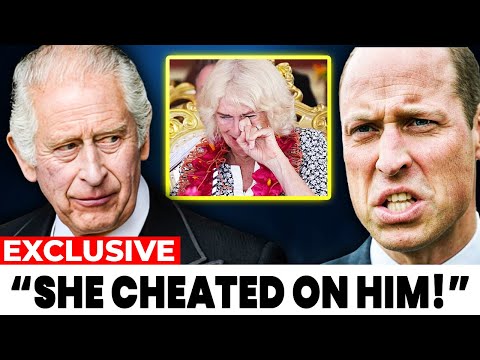A tense power struggle within the royal family has emerged, with Prince William at the center of controversy after refusing Queen Camilla’s request to include her son, Tom Parker Bowles, in a major royal charity event. The decision left Camilla in tears and humiliation, igniting public scrutiny and revealing deep fractures behind palace walls.
Prince William, the future King of England, has always carried the weight of royal tradition and public expectation. Since Queen Elizabeth II’s passing and his rise to Prince of Wales, his responsibilities—and the spotlight—have intensified. While navigating diplomatic duties and royal obligations, William also contends with the complex legacy of his late mother, Princess Diana. Her memory continues to influence his values and decisions, especially regarding Camilla, who was once entangled in the infamous triangle that hurt Diana so deeply.
Camilla, despite decades of service and charitable work, remains a contentious figure. Her transition to Queen Consort only magnified tensions with William, who’s viewed her growing role with quiet discomfort. The final straw came when Camilla requested that her son, Tom—an acclaimed food critic but not of royal blood—be included in the Windsor charity gala. William saw this as a breach of royal tradition. To him, the monarchy must preserve strict lines between duty and personal ties. Despite Camilla’s appeals, William stood firm. Tom was excluded.
The night of the gala, Tom was reportedly turned away at the gate. Camilla, holding back tears, put on a brave face in front of guests. But the exclusion of her son was more than a snub—it was a painful reminder that her family would never truly belong. Royal insiders say William’s move wasn’t driven by personal spite, but by his commitment to protecting the monarchy’s image. Allowing non-royals to represent the Crown, even symbolically, would blur important lines of tradition.
This wasn’t the first time Camilla’s family felt sidelined. In another move, William quietly ended the longtime professional relationship between the Duchy of Cornwall and Camilla’s sister, Annabel Elliot, a respected interior designer. Annabel had worked with King Charles for nearly 20 years, overseeing the redesign of royal properties. But after William inherited the Duchy in 2022, he opted not to renew her contract. Sources say it wasn’t a critique of her work, but a signal of William’s intent to modernize and reduce family involvement in royal finances.
These choices highlight William’s sharp break from past practices—and his vision for a leaner, more traditional monarchy. But for Camilla, they cut deep. Having fought for decades to gain public and institutional acceptance, seeing her children and sister pushed aside left her shaken. At the May 2023 coronation, many noticed that as Camilla walked down the aisle, few bowed. The silent snub reflected growing discontent within royal ranks.
Behind the scenes, King Charles struggled to maintain peace. Both Camilla and William are vital to his reign, and he sought to balance empathy with unity. He reportedly reassured Camilla privately, while also encouraging William to consider long-term consequences. Eventually, Charles called a private family meeting to calm tensions. He reminded them that the monarchy’s strength lies in unity—and the world was watching.
Despite public appearances of harmony at royal functions, those close to the palace say the rift remains. The exclusion of Tom wasn’t just about protocol—it was a symbolic assertion of power. Camilla may wear a crown, but William made clear that her family would never redefine the royal inner circle.
Camilla, ever the realist, has chosen not to retaliate. But insiders confirm she was deeply hurt. Her emotional bond with her sister and son, and the losses they’ve suffered in royal standing, have created lasting pain. William, meanwhile, remains committed to a monarchy rooted in bloodline and duty, not personal connections.
These recent moves—excluding Tom from the gala, ending Annabel’s contract, and rejecting expanded roles for Camilla’s family—signal William’s desire to shape a monarchy that prioritizes tradition and clarity. Whether this vision leads to long-term unity or deeper divides is still uncertain.
But one thing is clear: behind the smiles, the royal family is far from united. And as William inches closer to the throne, every decision sends a message. Camilla’s tears may have dried in public, but the emotional toll behind palace doors continues to reshape the future of the British monarchy.
